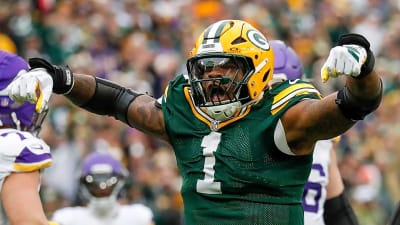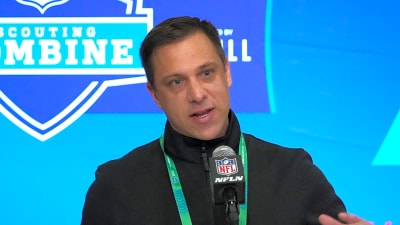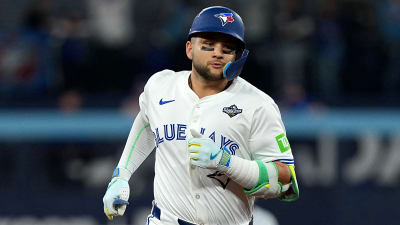
Why the Cleveland Indians came up short
Unlike with the Chicago Cubs, nobody saw this coming from the Cleveland Indians. Starting with their 14-game win streak and 22-win June performance, they had been putting something special together, but it largely eluded the headlines. Perhaps this was because more focus was on the David Ortiz farewell tour, Los Angeles Dodgers rounding into form or those Cubs, or maybe it was simply because Cleveland doesn’t move headlines unless LeBron James is attached. Who knows?
One thing that’s certain is that the Cleveland Indians, who won 94 games en route to becoming American League Champions, were the most underrated team headed into the postseason, a neglectful notion that was quickly dispelled by them as they made short work of the AL playoff bracket.
They beat the odds of expectations and made it into the World Series, where they took the fight to the favored Cubs for as long as they could. Ultimately, they could not outlast the varied and powerful Chicago lineup and pitching, and their World Series drought will now take over as the longest running spell in all of baseball, as it opens its 69th year next spring.
Can the Indians stay at their current level and take another swing at getting over the October hump? Time will tell. However, we know why they fell short this fall and that they will be on the search for answers this winter.
1. They squeezed as much as they could out of Corey Kluber
Until Tuesday night, Kluber appeared to be on one of those untouchable, Madison Bumgarner/Curt Schilling type of runs through October. He became the third pitcher to ever start three games in a single World Series on Tuesday night, but from the beginning it was clear that he did not have the same form in his third start in nine days’ time as he did earlier in the series.
Kluber only lasted into fifth inning, where he did not record an out before getting pulled. He allowed one more run on Wednesday than he had over his other five postseason starts combined. It was an admirable effort, one that saw him carry the responsibility for a largely depleted staff that operated shorthanded throughout the entire postseason. But in the end, it was just too much of a burden for one man to carry.
2. Andrew Miller finally was cracked
For as much as Kluber represented within the starting rotation, Miller carried a similar load in everyday doses. He was phenomenal as a genre-bending fireman reliever throughout the playoffs, but Wednesday night seemed to be the straw that broke his back as well. The Cubs touched Miller for two runs in two innings, while he surendered four hits and a walk. He was finally mortal and left the Indians without their biggest roadblock in their arsenal.
3. Center field defense was a liability
Neither Tyler Naquin or Rajai Davis had encouraging performances in the field. Naquin cost the Indians crucial runs in Game 6 early on, while Davis’s momentary misstep on a Willson Contreras double drove in a run as well. It is incredibly tough for such a pitching-dependent club to have shaky defense behind it in center, and it cost the Indians in the end.
4. Mike Napoli went MIA
Coming into the World Series, Mike Napoli had more experience than any other Indian, making the trip to the World Series previously as a member of both the Texas Rangers and Boston Red Sox, with whom he won the 2013 World Series.
Yet after a regular season in which he was such a pivotal part in transforming the Cleveland offense from its mediocre 2015 form into the second highest scoring unit in the American League, he came up dry in the Series, hitting only .167 and driving in a single run.
It capped a postseason in which the free agent-to-be hit .160 as a whole.
5. Failure to capitalize on Cubs' missteps
The Cubs committed three errors in Game 7, which created a gateway for the Indians to do much more than they ultimately did. However, they were unable to create momentum off of these flubs by the Chicago defense and, once again, left runners on to be runs unfulfilled.
Three errors, in a game in which a team works out seven runs as is, is a pivotal chance to make the difference. And the Indians failed to do so.
6. They were woefully bad at home
After jumping out to a commanding 3-1 series lead, built on the back of winning their first two road games in the World Series, the Indians collapsed as Cubs' bats heated up. And while they played inspired baseball on the road, they were horrible at home. Despite having home-field advantage, they dropped three of four contests at Progressive Field, all of which came consecutively.
The Cubs outscored the Indians 22-11 in Cleveland, becoming the first team since the 1979 Pittsburgh Pirates to both come back from a 3-1 deficit and win three games on the road to do so.
7. Game 7 suffering prolongs a very specific Cleveland pain
This marks the second time in as many World Series appearances that the Indians have lost in a Game 7 situation. The last was in 1997, when the Florida Marlins won on an Edgar Renteria single, which also came in extra innings. Perhaps the pain of this one is not as severe, for it was not a loss of the walk-off variety. Then again, this one happened at home and after they had mounted an improbable comeback via Davis’s home run versus Aroldis Chapman.
Each World Series loss holds its own type of pain. However, with the dueling drought circumstances of this one, combined with the loss of control on the World Series and the plethora of fans celebrating in their own park, this could be the most painful in recent memory that any team — or fan base — has had to endure.
This quiz includes Cleveland Naps players. An asterisk (*) denotes non-consecutive years played.
0/35
8:00
More must-reads:
- Cleveland savaged with memes about blowing 3-1 series lead
- Rajai Davis’ poor defense gives Cubs big inning in Game 7
- The 'Cleveland Indians Hall of Famers' quiz
Breaking News
Trending News
Customize Your Newsletter
 +
+
Get the latest news and rumors, customized to your favorite sports and teams. Emailed daily. Always free!








